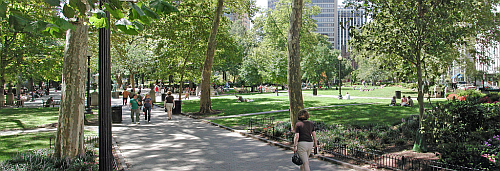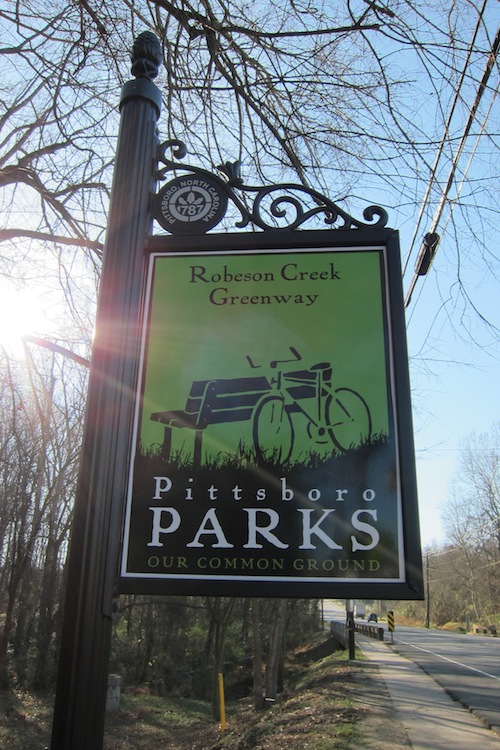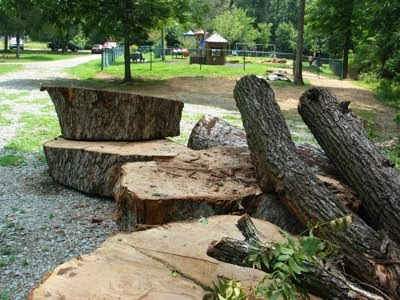Open Space - the left over bits or more?
Is Open Space perceived as just the left over undevelopable wetlands, steep slopes and floodplains, or can it play a more central role?
 |
| Photo of Rittenhouse Square, Philadelphia courtesy of UrbanGrammer |
"In the US, the maybe most famous American landscape designers, Frederick Law Olmsted and his sons, the Olmsted brothers, began in the 19th century to see open space not just as the absence of development but as an organizing piece: Man-made nature surrounded by development. They designed parks as centers, as magnets that hold everything together, as real three dimensional spaces that were indivisible from development itself. The most famous example of this new type of thinking about open space is Central Park in Manhattan. Now a world renowned park, that gives the surrounding edges enormous value, it was back then part of a largely undeveloped peninsula. But Olmsted could see a different future in which is design would be would be not just the frosting on a cake, but maybe the most important ingredient. He foresaw the future and helped shape it. The park as organizer, as catalyst, as vital resource, a far cry from being just the passive absence of development."
Text excerpt from: Klaus Philipsen. (2012, November 15). Community Architect:
"Open Space" the Stepchild of Planning is Key for the Future of
Suburbs. Retrieved from
http://archplanbaltimore.blogspot.com/2012/11/open-space-stepchild-of-planning-but.html


Comments
Post a Comment